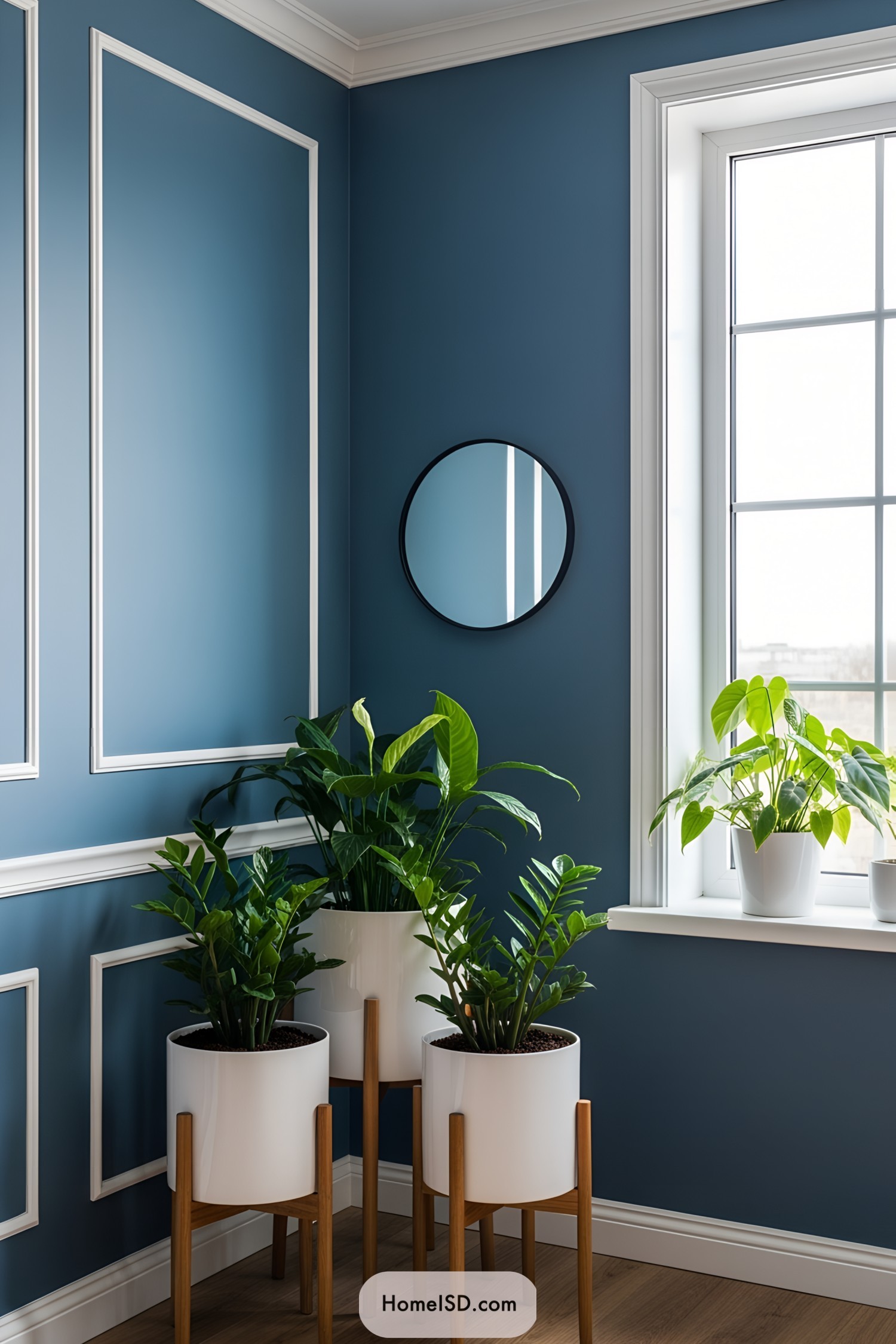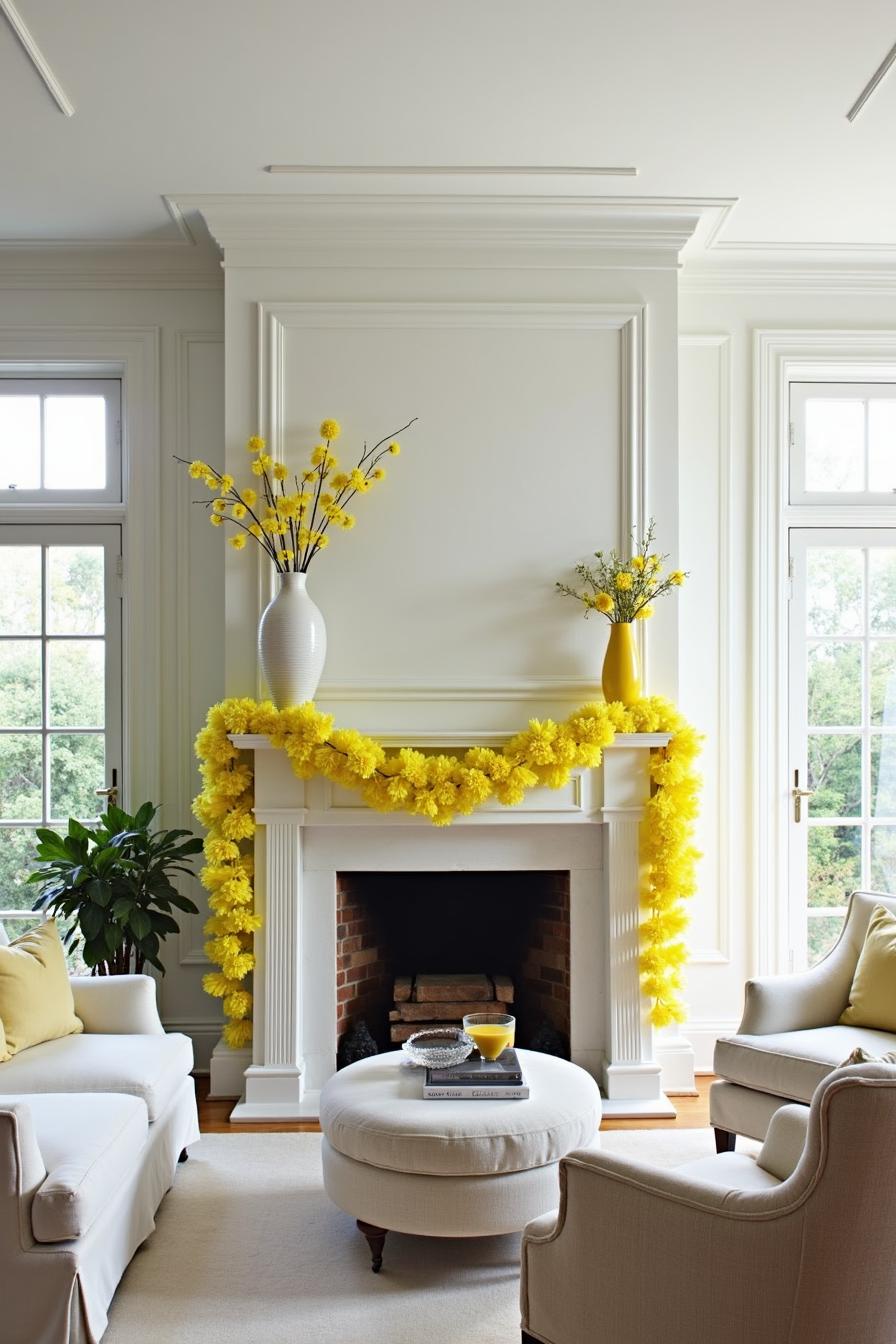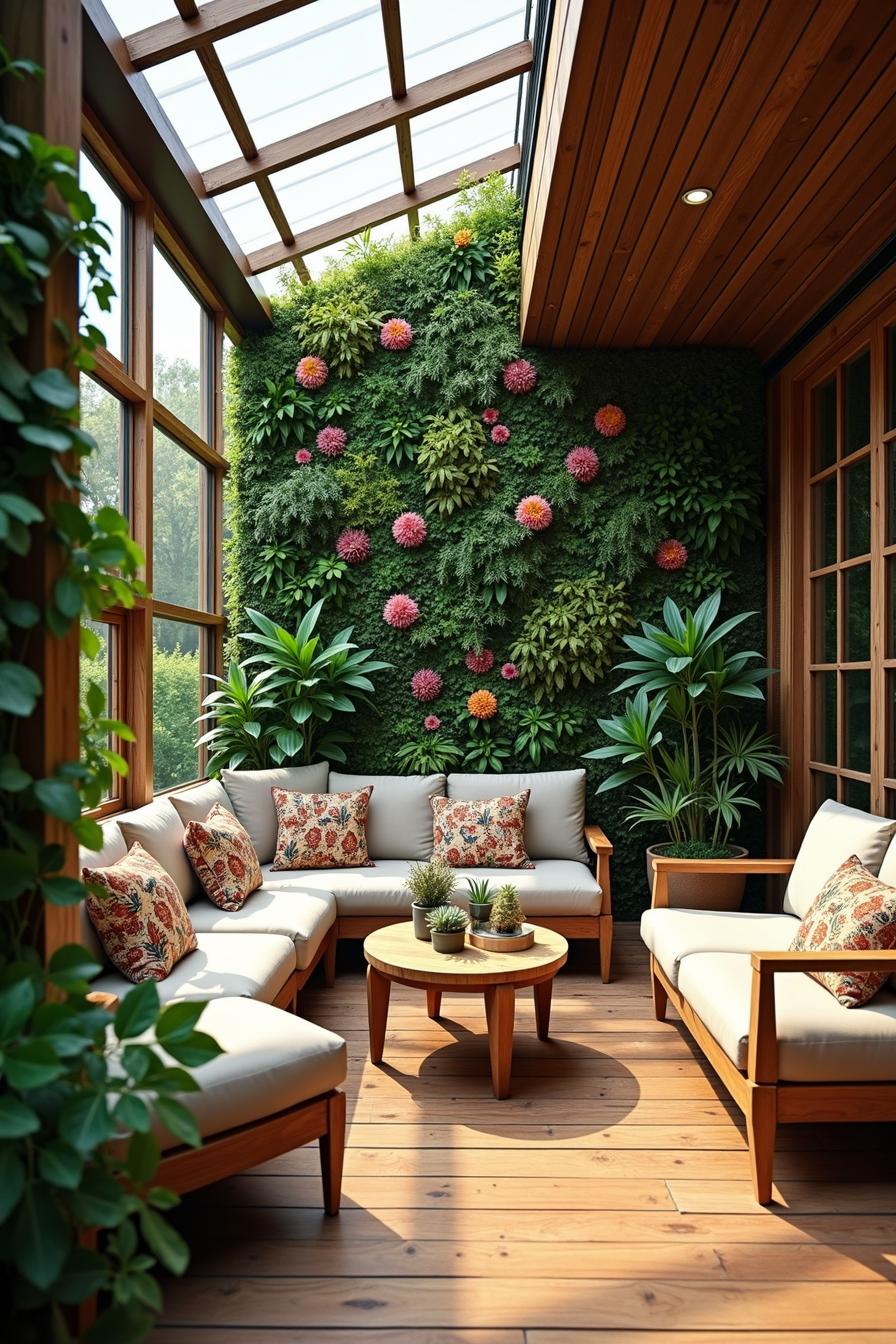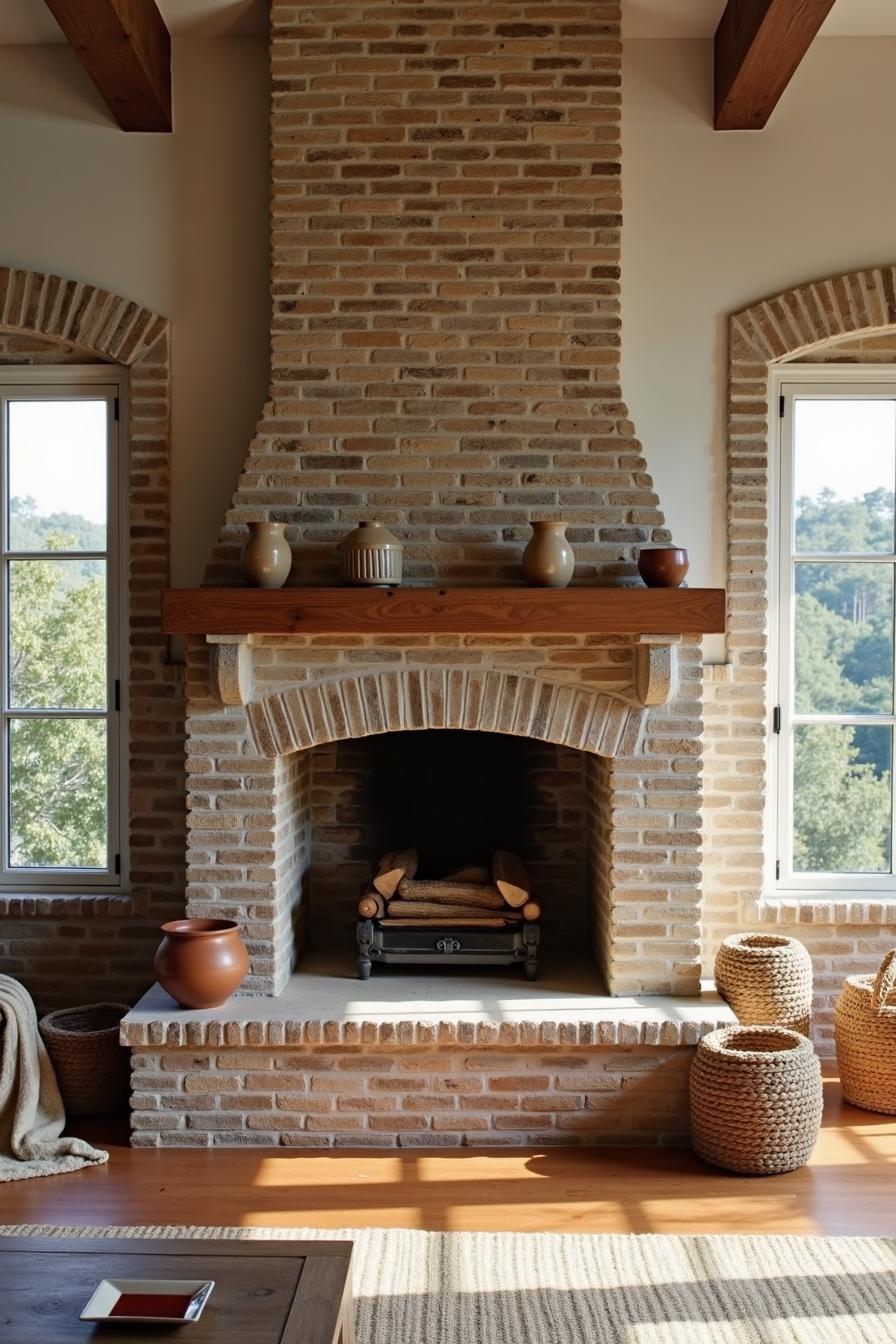Last updated on
So your new flat screen smart TV has arrived. You unpack it. Where do you put it? It has to look good and make sense. For the hefty fee you’ve spent, it better. These are the top 10 ideas.
Need a quick answer? Skip to it.
There’s a bit of a conundrum about positioning the TV in the living room (or the bedroom), especially if it’s a rather awkward room. Your challenges are the windows, the furniture, the floor plan, the availability of space, finally, the position of power outlets.
If you want to put the TV in the right place, so it’s convenient, it looks good in your decor, and all in all not a nuisance, you have to think this through. Everything matters, the size, the height, the distance, the lines of sight.
Sound complicated? It’s not. Implement just one of these ideas, use TV stand alternatives, and you’ll be way ahead of most people. You don’t have to be a seasoned decorator or designer to get it right. We’ve got you covered there.
Let’s begin with the most important idea that concerns the integration of the TV unit into your decor.
Integrate the TV
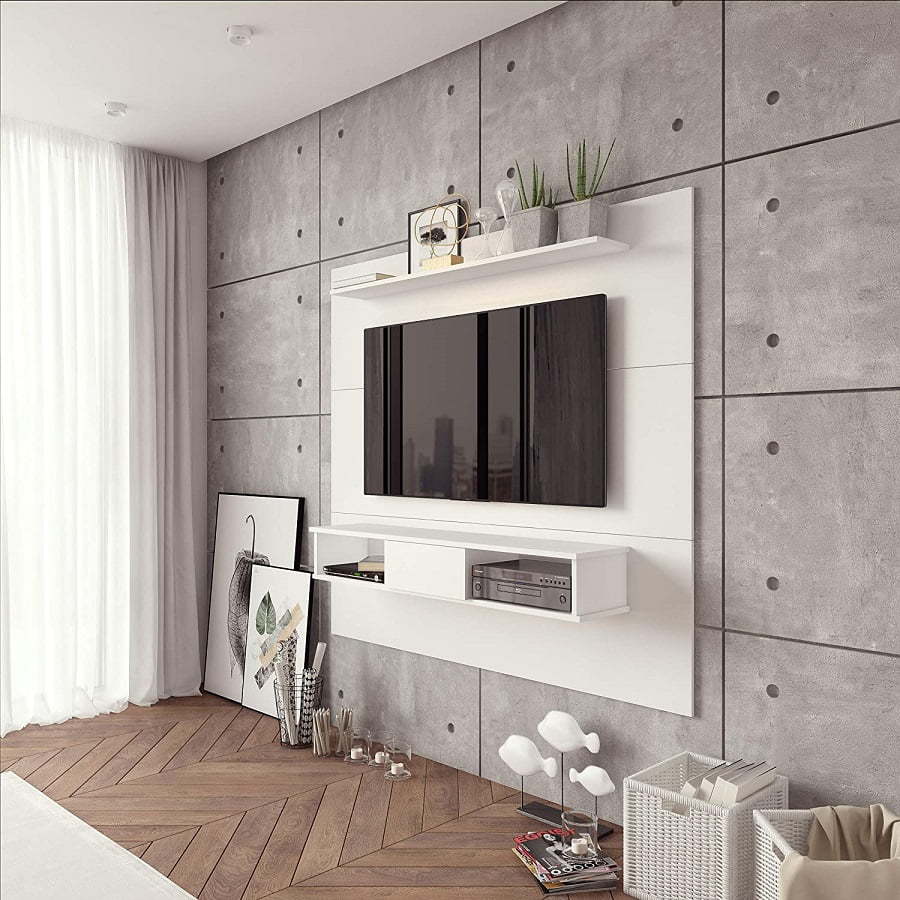
Check Out the Top 10 Best Under TV Shelves
The key to the best TV placement in the living room is integrating it into the interior design and decor. You can do it by arranging furniture and art around it. If you mount the TV on the wall, consider what you will put under it. Under TV shelves help this integration process.
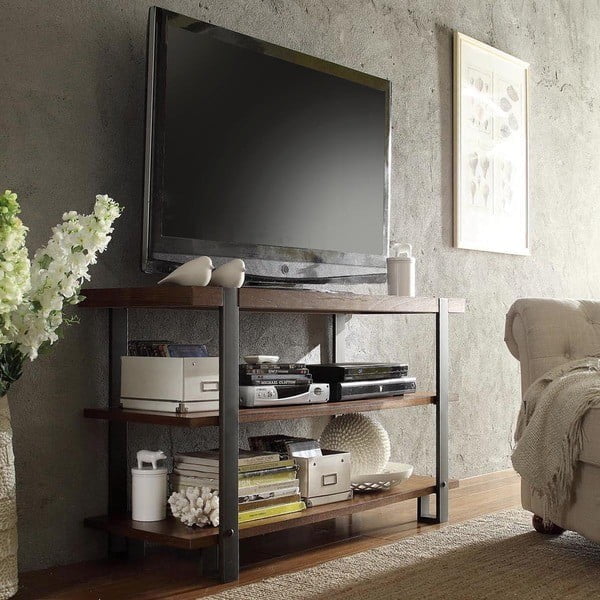
Check Out the Top 10 Best TV Stands and Media Consoles
Also, consider a dedicated TV stand or media console with built-in shelving. It will help you fill the room with more than just a black box. Use the new piece of furniture as a vibrant decor expression by adding art, display objects, book decor, plants, and more. You may use cabinets, drawers, and shelves to place the TV speakers, remotes, electronics, and other components.
Hide the TV

If you do not want your unit to be the focal point in your room, put it away in a cabinet or an armoire. Ensure there are openings in the back (or drill the holes yourself) for all the cables. You should ensure the cabinet is easy to open and shut if you have kids using it.
A small TV will blend in if surrounded with black and white art. Bigger art pieces will help the black box blend in and not look out of place.
When you decide to mount a TV, remember to make sure you have the free room to position your gadgets, such as your Apple TV and DVD player. An extra shelf can be useful to store bulky hardware components, while wire baskets can be placed to cover parts and are useful for storing video games and movies.
Furniture
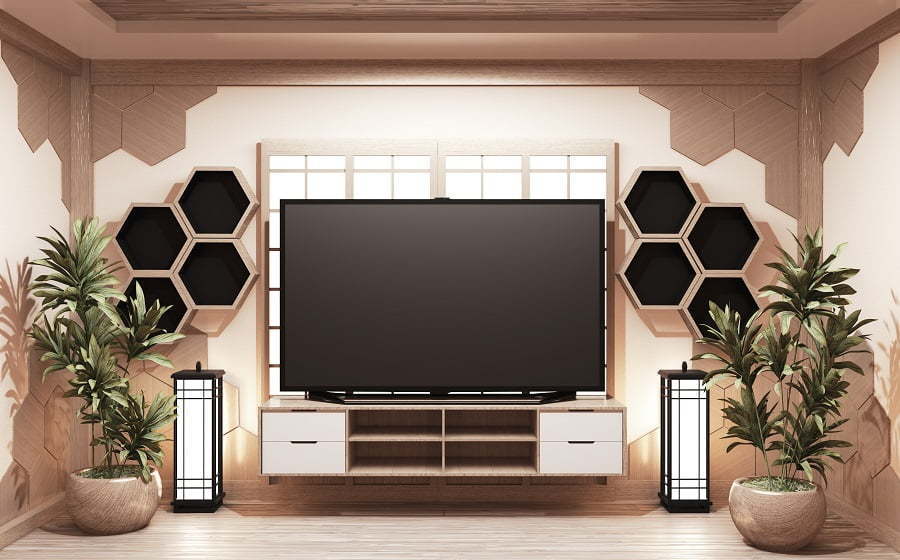
Use furniture to define a more purposeful location for a wall-mounted television. Here, two shelving units containing bookcases and other accessories frame a flat-screen TV. Consider integrating a television into wall cabinets not to dominate the room. The fireplace can be the focus by putting the TV over it, and the screen will still be visible. Televisions come in uniform sizes, so even though you move to a new model, you should be able to switch it out quickly. Laminate frames, racks, and cabinets to hide the cables.
Find a Power Source
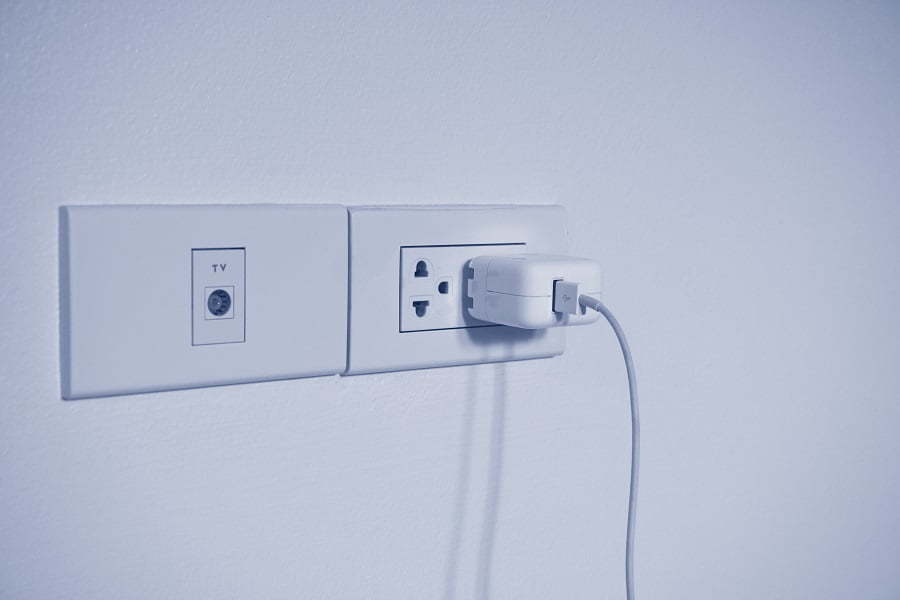
Naturally, you’re very limited by the positioning of your power outlets in the room. You’re not going to string several cord extensions together to put the TV across the room if there’s nowhere near to plug it in.
Spacing
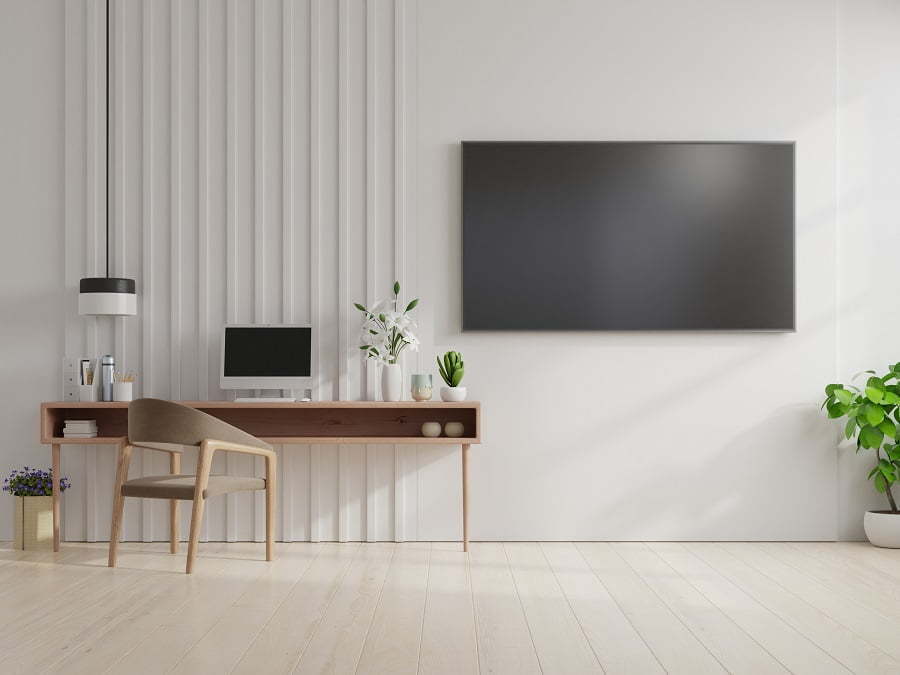
When thinking about the spacing between the TV and the seating, you have to think about the height first. It has to be near the eye-level when seating (the recommended angle is no more than 30 degrees). This method is the best so that when sitting, you don’t strain your neck or eyes to see the screen. Usually, 4 feet above the ground is sufficient. Then decide the correct viewing distance. This is not always important, but it’s a good habit to start — it will depend on the screen’s size.
One of the biggest interior design mistakes is buying a unit too small for a room. This also refers to television. It’s problematic if the TV takes over your living room and makes it the main subject of attention. Don’t fill a small space with a giant TV. It won’t look good, and it will hurt your eyes.
Open Floor Plan
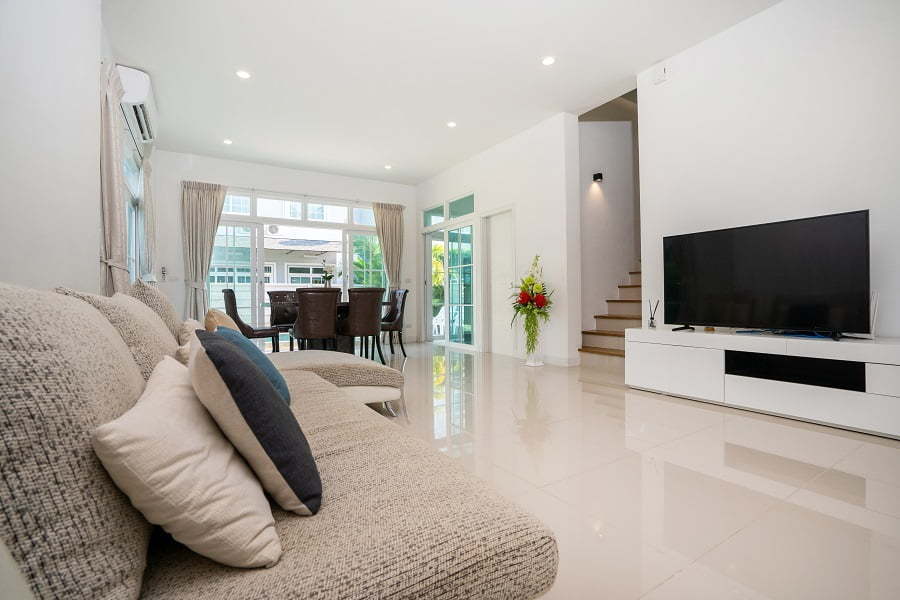
An open floor plan is common, especially if the living area shares the same space as the kitchen. It is then essential to position the TV correctly so it doesn’t get in the way.
First, you need to take a close look at the sight lines available within your space and adjacent spaces. In that way, more of the rooms become connected to other rooms of the house.
There is a term called “free-standing TV mount,” which is extremely common among people today. Full-motion mounts allow you to quickly move your TV left and right or up and down. Point your TV in the same room and turn it off as soon as you’re done using it.
Attention needs to be paid to the changing foot traffic patterns so that traffic flow is not blocked. Make sure there is minimal traffic between your TV and sofa. To prevent that from happening, you can keep the family members from walking in front of your favorite show.
Choose a Focal Point

A large TV is standing out as the focal point of the room. Mounting the TV to the wall frees up floor space. To minimize electric cord presence, you will either need to conceal them on your wall or use covers.
If the TV is the focal point in your living room, then put it in the center. It is better to add another focal point if you already have one: a fireplace mantel or a pretty photo that you can hang on your wall.
Your flat screen should not be the only big thing on the wall, even though it is a big one. Don’t place art and collections on the floor; place them on walls or a mantel. Select large-scale units for your TV stand or TV console.
Windows
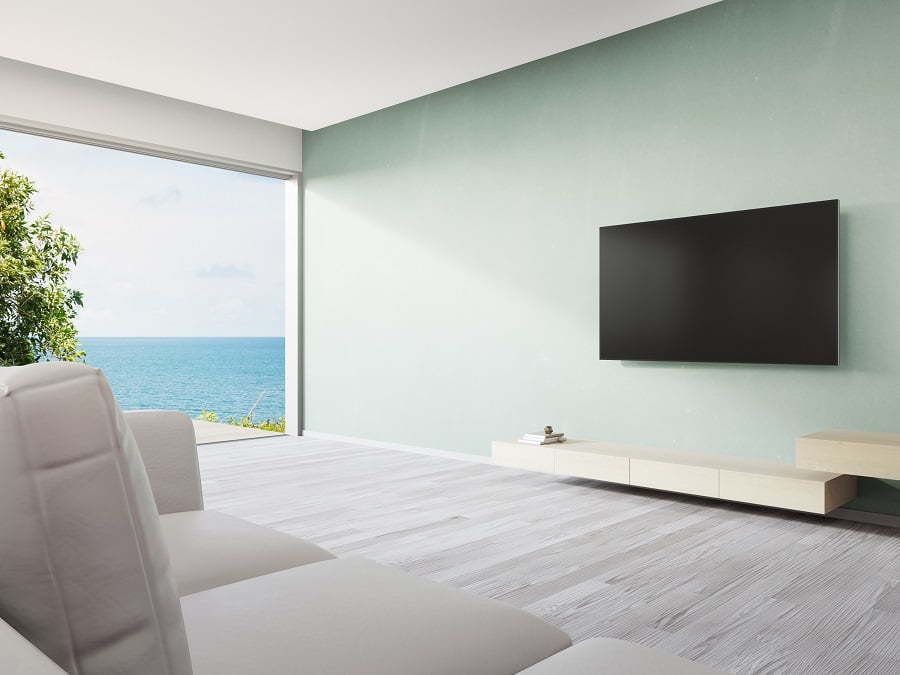
It is best not to let the TV face a window. Position your TV as far away from windows as possible. Reduce the amount of glare and shine on the screen as much as possible.
Fireplace
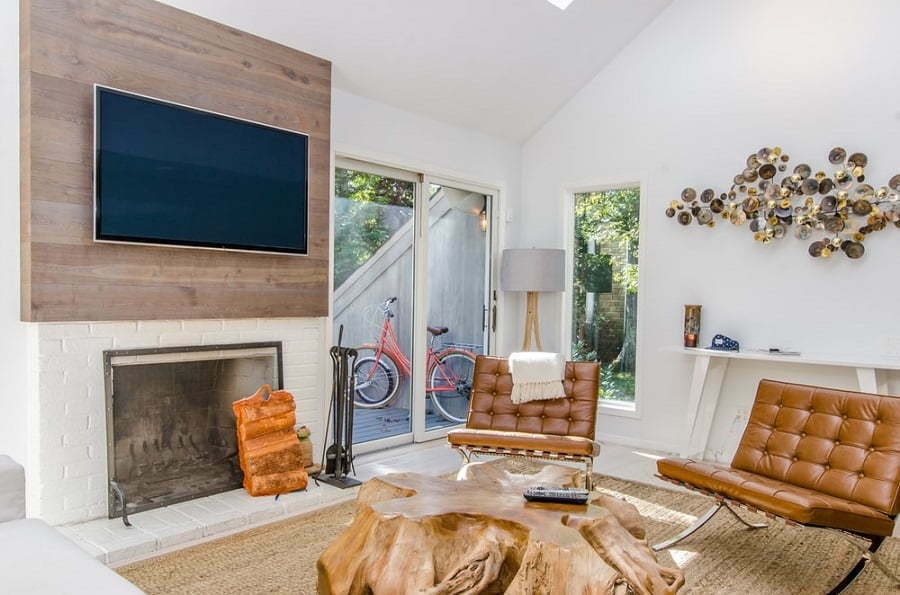
Most decorators would say that one should never put his television on the mantelpiece. Not only is it too large, but you’ve set a big black screen in the center of the wall’s best focal point. Instead, if you would mount your TV to a wall, place a flat screen over the mantel.
If your fireplace is not too tall, then you may be able to hang the television from it. This will retain the fireplace in the middle of the living room and enhance the living space’s coziness. Of course, it’s easier if the screen is tilted down slightly. Anyone who wants to have a fireplace should build a low, rectangular one. This will allow for ideal TV placement.
Avoid putting a television above a fireplace if at all necessary, though. When you look up at a TV over the fireplace, your neck can hurt, and your sitting posture will be against the glare of the fire. Instead, it would be best if you put the TV next to the fireplace.
Bedroom
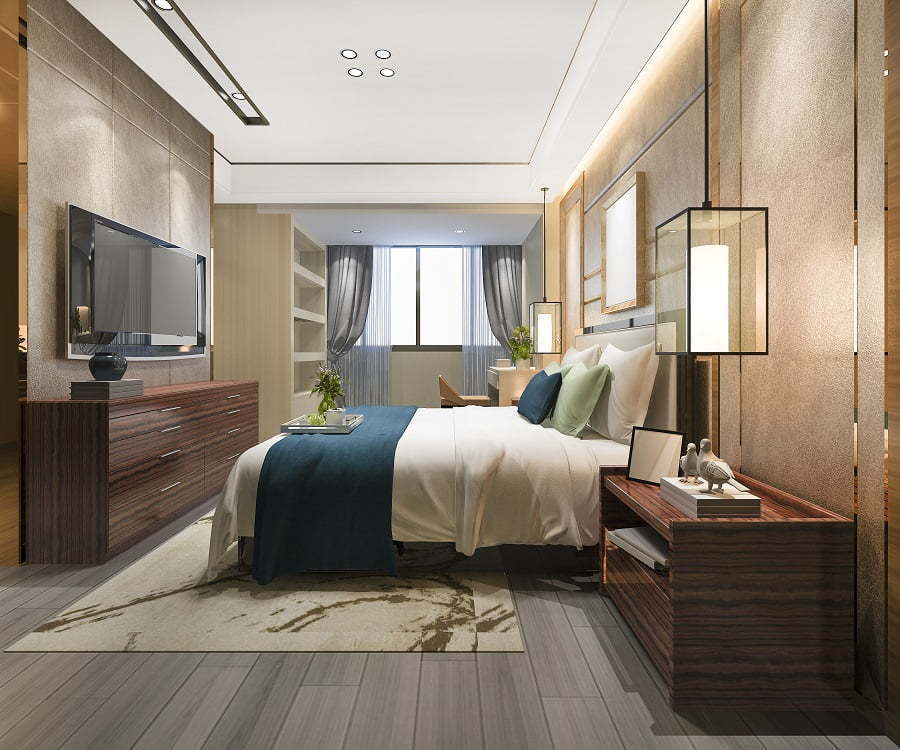
Some people say it’s not a good idea to have a TV in your bedroom. It might have a negative effect on your sleeping habits. Others can’t imagine falling asleep without a TV show running in the background. Whatever your opinion is on the matter, you can still consider having it near your bed.
The easiest way to add a TV to a bedroom is by placing it on a piece of furniture. A dresser across the foot of your bed is perhaps the ideal placement. If it’s a small room and the only free space is the wall — you can mount the unit there. A rule of thumb is to avoid placing it in the corners.
So, just like you would mount a TV on a wall in the living room, you can do the same in the bedroom. Same rules of spacing and decor apply. An adjustable mount would help you to rotate and tilt the TV to a comfortable position for viewing.
FAQ
The TV should be positioned at the eye-sight level when seated (that’s the usual position in which you will watch it). The deviation from that is recommended no more than 30 degrees of the viewing angle. An adjustable mount can help you set the right angle.
Looking up at the TV for a long time will tire your neck pretty quickly. It’s not the most comfortable position, and you will not find it relaxing or enjoyable.
The couch must not face the TV directly. It’s true that it’s a comfortable viewing position but you have to think about other functions of your living room and the sofa. The TV shouldn’t become the only focal point and object of all your social interaction. An off-center placement is just as comfortable, and you can add other seats around the sofa as well.
The recommended distance is about two times the screen size. So if your TV is 50”, the ideal distance would be about 8 feet.
Mounting the TV on the wall saves you a lot of space. So it’s the ideal solution in a small room. However, in larger rooms, it makes sense to have a dedicated media console that would not only be functional but add to your decor as well.
A big TV can be too big for a small room if it cannot accommodate the viewing distance. So a 60” TV will not provide a comfortable viewing experience if you can’t place the sofa about 10 feet across from it.
If you’re into DIY, it’s possible to make a TV stand or a media console by following woodworking plans. A simple way to do this is by using pallet wood or wooden crates. Other people find a bookcase excellent for this purpose.
Recap
